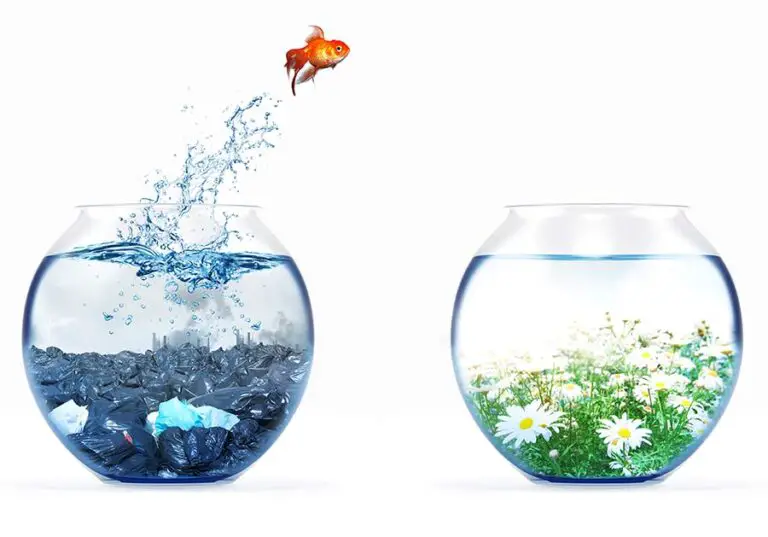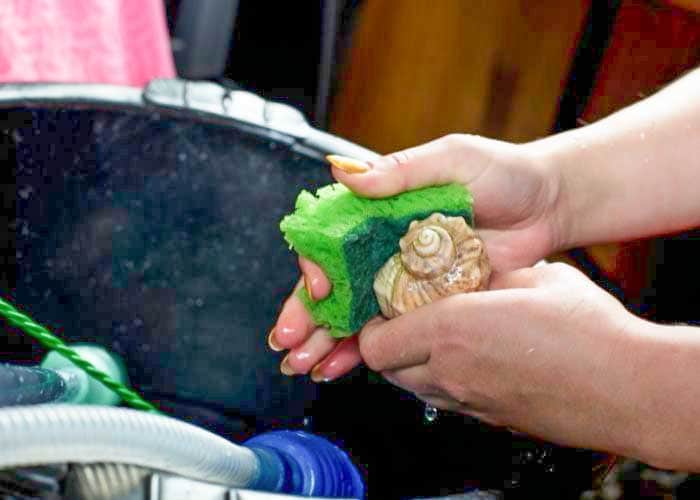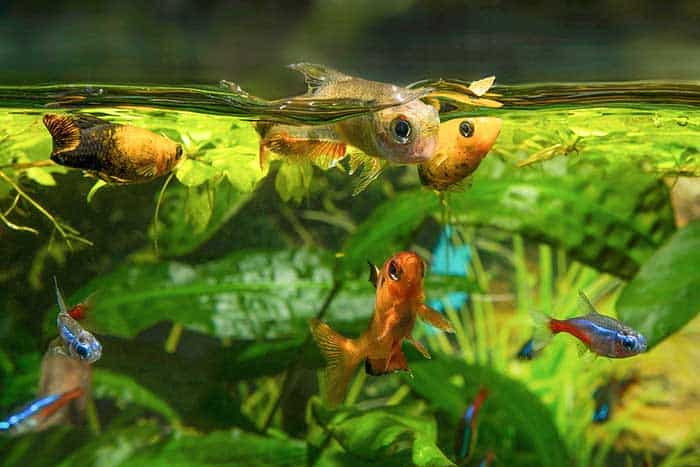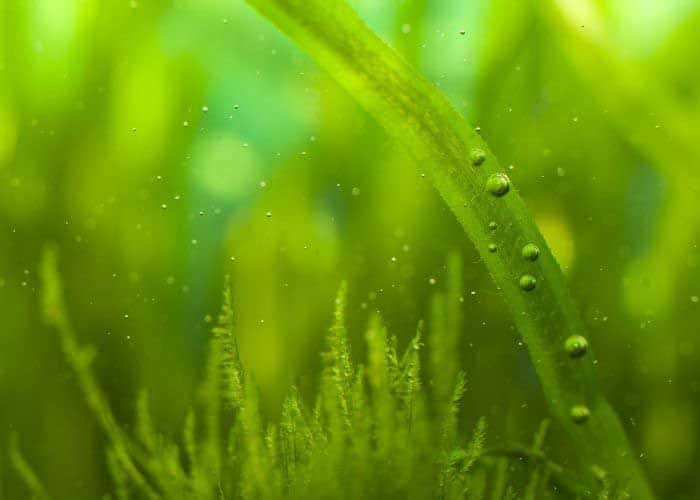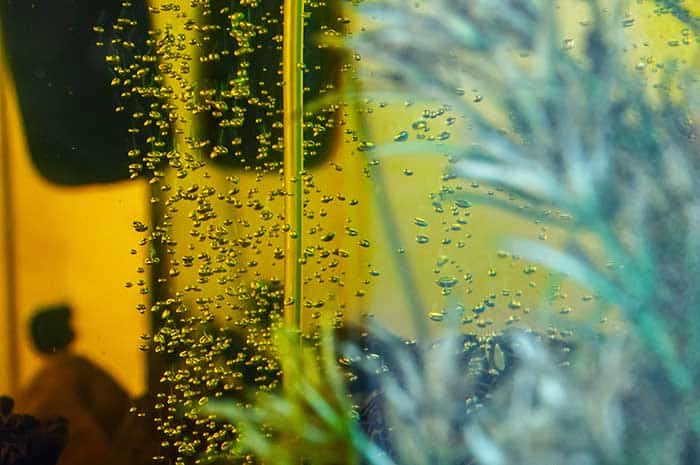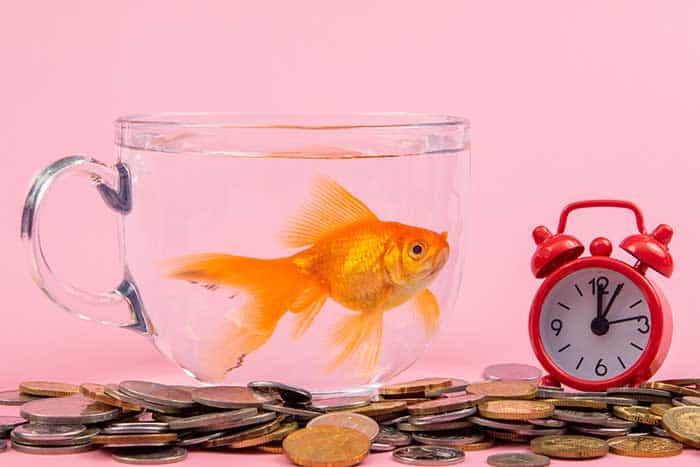How To Reduce Ammonia In A Fish Tank (7 Top Tips)
One of the biggest concerns for people with fish tanks is ammonia. High ammonia levels can be deadly to fish, so you must take steps to keep your water parameters in check. Luckily, this article teaches you how to reduce ammonia in a fish tank, and how to prevent future issues.
The best way to reduce ammonia is to ensure your fish tank is producing plenty of nitrifying bacteria. This bacteria converts toxic ammonia to a less toxic form. Toxic ammonia is also more prevalent when pH increases above 7. Acidic water has a positive effect on lowering levels of NH3 (toxic gaseous ammonia) while increasing less toxic NH4 (Ionic ammonium).
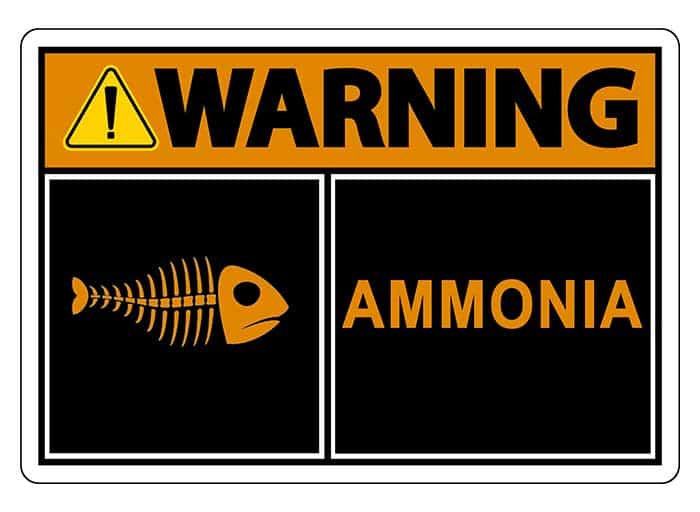
In this article, I discuss 7 of the most effective methods to reduce ammonia, which are:
- Add beneficial bacteria.
- Perform a 50%-80% water change.
- Use a detoxifying water conditioner or ammonia remover.
- Use a good aquarium filter.
- Add some live aquarium plants.
- Reduce feeding frequency.
- Regular tank maintenance and cleaning.
If you want to maintain a healthy tank, keep reading to learn more about what causes ammonia and how to reduce ammonia in a fish tank!
Fish Tank Ammonia Chart
When measuring ammonia in your fish tank, it is important to understand that there are 2 forms of ammonia, NH3, which is the highly toxic gaseous form of ammonia, and NH4, the less toxic ionized ammonium.
When pH is low and the water is acidic, it heavily reduces the toxic form of NH3 ammonia, but with a pH higher than 7 and at certain water temperatures, the concentration of toxic NH3 ammonia is much higher.
Most ammonia test kits measure the total ammonia and can sometimes provide a high reading which may not be a problem if the ammonia is of the less toxic form, When testing ammonia levels with a test kit, it is best used in conjunction with the fish tank ammonia chart below.
I sourced the below ammonia toxicity chart from New Mexico State University, which focuses on the non-ionized toxic ammonia that can be the most harmful to your aquarium.
his ammonia chart is an excellent way to test for toxic ammonia if your aquarium’s pH and temperatures are within the given ranges.
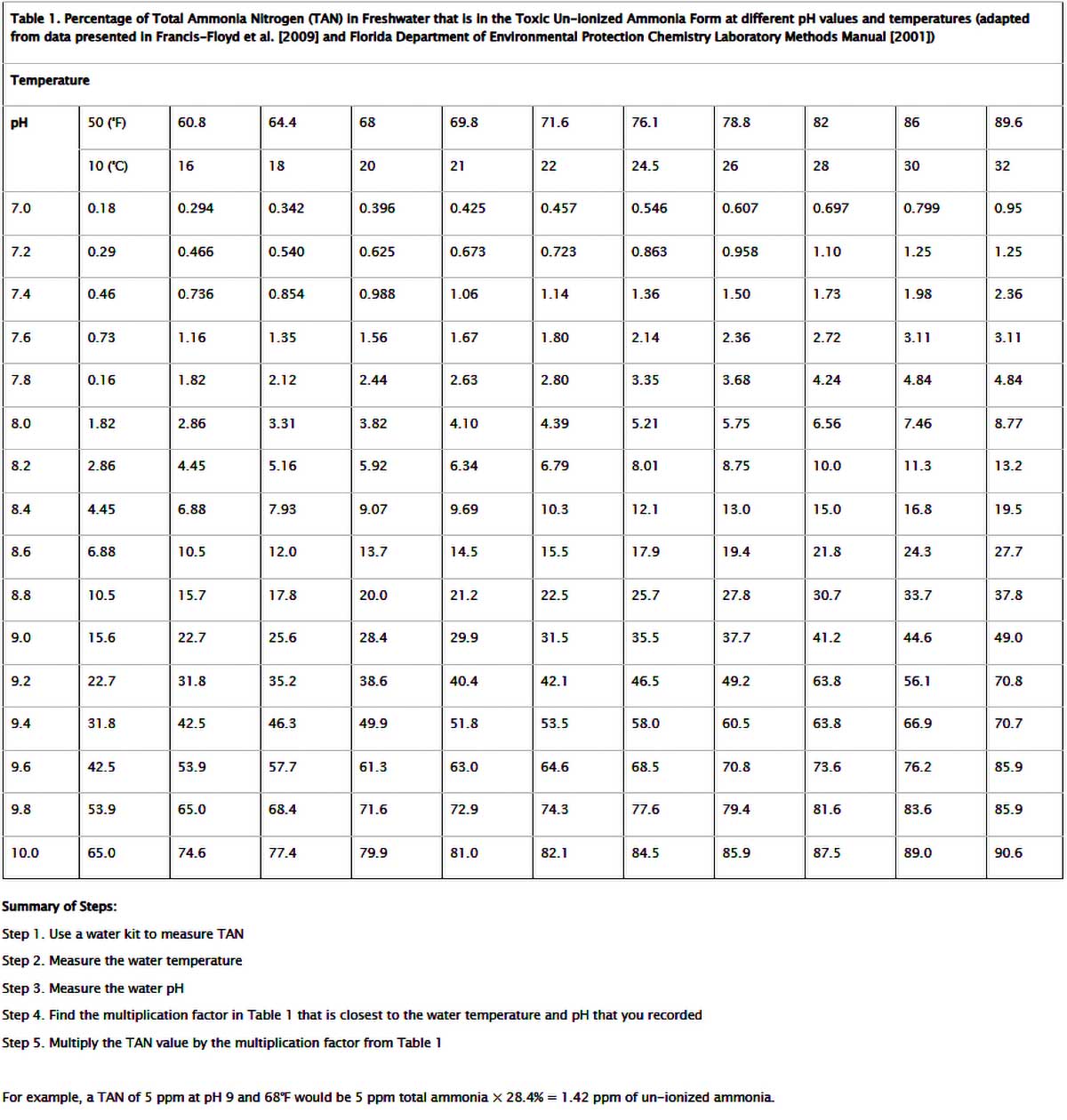
How To Lower Ammonia Levels In Fish Tank
You can use several methods to lower ammonia levels in a fish tank. Some of these methods are only a short-term fix, while others control ammonia levels in the long term.
Any amount of ammonia in your aquarium water is considered toxic, so you should aim to reduce your ammonia level to 0 ppm (parts per million). Ammonia levels of up to 0.5 ppm should be okay for most fish, but ammonia levels of 2 ppm can lead to a tank full of dead fish in only a few hours.
So let’s look at the most common methods to remove ammonia.
Add Beneficial Bacteria
The most effective way to lower ammonia in a fish tank is to encourage the growth of beneficial bacteria. I talk a lot about beneficial bacteria in this article, as it’s the most critical factor when controlling ammonia levels.
Beneficial bacteria aid the nitrogen cycle, the lifecycle of many microorganisms present in your tank. Rotting fish waste, uneaten food, and plant waste convert to ammonia. Ammonia provides food for the beneficial bacteria, which are then excreted (or converted) to nitrites (another harmful substance).
Nitrites provide food for another set of bacteria in your tank, and when consumed by these bacteria, the waste product nitrates is excreted. Nitrates are the final stage of the nitrogen cycle. They are non-toxic to fish, an excellent food source for live plants, and help the gas exchange process where oxygen enters the tank.
The aquarium nitrogen cycle is a little more in-depth, but the importance of beneficial bacteria is relatively straightforward; it consumes and converts harmful substances like ammonia into non-toxic substances.
You should always cycle a new fish tank before adding fish. Cycling a tank is when the nitrogen lifecycle begins, and beneficial bacteria start to grow. This process can take anywhere from 3-6 weeks. If your tank struggles with ammonia spikes, you can perform an emergency 24-hour cycle by adding in some nitrifying bacteria by hand.
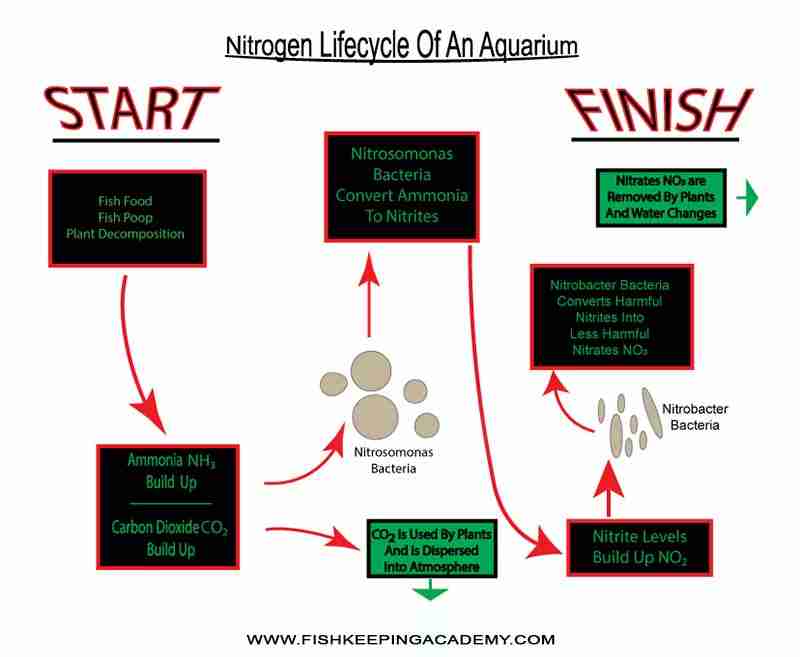
How To Get Beneficial Bacteria In Aquarium
Beneficial bacteria grow naturally when you first cycle your fish tank. However, you can also encourage the growth of beneficial bacteria by adding them to your fish tank. There are several ways to do this:
- Add gravel or substrate from an established fish tank.
- Add some water from an established tank.
- Use a filter or some filter media from an established tank.
- Use a commercial product like API’s Quick Start.
An established tank has an abundance of beneficial bacteria growing within the substrate, the filter and free-floating in the water. Each of these methods has an immediate effect on bacteria levels and encourages new growth.
What I Use
I mentioned using a commercial product such as API’s Quick Start, a bottled form of the required bacteria.
Perform A 50% Water Change
Carrying out a 50% water change should immediately impact ammonia levels. As ammonia is removed from the water, it’s replaced with fresh water, diluting the remaining ammonia, making it less harmful and easier for beneficial bacteria to get back under control.
More significant water changes of up to 80% are possible, but you must ensure you treat and heat the new water to match the tank water closely, or you will shock your fish.
Carrying out large water changes will also remove beneficial bacteria, so you must add bacteria using one of the methods discussed previously.
Large water changes are a temporary measure, and the problem will likely reoccur unless you fix the cause of your ammonia spike.
Use A Water Conditioner
Water conditioners are commonly used to remove chlorine and other chemicals from tap water, but some water conditioners will also detoxify ammonia.
Detoxifying water conditioners like the one below by API, won’t remove ammonia from your tank, but it makes it safe for your fish until you get on top of the problem.
API Ammo Lock – Ammonia Detoxifier
API Ammo Lock – Ammonia Detoxifier
API Ammo Lock is for freshwater and saltwater aquariums. Ammo lock is designed to instantly detoxify ammonia, chlorine, and chloramines.
While this treatment does not remove ammonia from the water, it converts it into a non-toxic form, keeping your underwater buddies safe.
Use An Aquarium Filter
A good canister filter helps remove waste products and toxic chemicals from the water. A good fish tank filter has several layers of filter media, each targeting a different type of waste.
The first layer is a mechanical filter that removes physical debris from the water, like uneaten food and fish waste. The second layer is usually a chemical filter media like activated carbon which adsorbs (attracts and holds on to) dissolved organic waste and chemicals.
And finally, the third layer is usually a biological filter media. This is where the beneficial bacteria grow, consume ammonia, and convert it into nitrites and then nitrates.
A good canister filter has all three types of filter media, but you can also buy each type of media separately to add to your existing filter.
You should ensure that your filter works efficiently and is suitable for your tank size or add a second filter elsewhere in the tank.
When cleaning a filter, you should rinse in the fish tank water because cleaning in tap water kills the beneficial bacteria colonies within the filter media.
Tap water contains chlorine which kills beneficial bacteria, so cleaning anything with tap water destroys those necessary bacteria colonies, enabling ammonia levels to spike.
How To Lower Ammonia Levels In Fish Tank Naturally
The methods of lowering ammonia levels I have discussed will generally act quickly to reduce ammonia levels in a fish tank. However, some natural ways can help lower ammonia levels in the long term.
Feeding routines, general tank maintenance, and adding live plants will impact ammonia levels, so let’s look at why.
Add Some Live Plants
If you have live plants in your fish tank, they help to control ammonia levels by absorbing it from the water. This is one of the reasons why live plants are so beneficial in a fish tank.
As well as absorbing ammonia, live plants also consume carbon dioxide and produce oxygen through photosynthesis. This helps to improve water quality and creates a more stable environment for your fish.
To ensure your live plants effectively control ammonia levels, you should ensure they are clean, healthy, and receive the correct amount of light and nutrients. I have written an article on how to clean aquarium plants.
Reduce Feeding Frequency
Overfeeding fish is a common cause of ammonia spikes because uneaten fish food will decompose and produce ammonia in the water.
You should only feed your fish as much as they can eat in a few minutes and remove any uneaten food from the tank.
It is also a good idea to fast your fish for one or two days each week to allow their digestive system a chance to rest. Reduced feeding also minimizes fish waste, another culprit for high ammonia levels.
Regular Tank Maintenance
Regular tank maintenance is essential for keeping ammonia levels low. You should perform a partial water change of around 20-30% every week or every other week.
When changing the water, you should vacuum the gravel to remove uneaten food and fish waste, which will help keep ammonia levels down. If you have too many fish in your tank, they will cause a lot of waste that needs to be removed.
It would be best if you also cleaned any decorations in the tank with hot water (no soap) to remove any build-up of algae and waste.
When cleaning your tank, don’t use chemicals that kill beneficial bacteria. I often siphon some tank water into a bucket, and before throwing the water away, I use it to rinse my filter media and decorations. This way, good bacteria remain intact.
What Causes High Ammonia Levels In Fish Tank?
High ammonia levels in a fish tank are caused by too many ammonia-causing waste products and not enough beneficial bacteria to consume them. Nitrifying bacteria regulate their growth to the required level to control ammonia.
Excess ammonia is typically caused by:
- A sudden boost in decaying organic matter.
- A sudden decline in nitrifying bacteria through overcleaning.
- A reduction in nitrifying bacteria due to chlorine and other chemicals.
The natural cycle of an aquarium is a delicate balancing act, which generally occurs naturally, but if you were to interfere with the natural balance, then you may suffer the consequences.
Below is a good video that I found on Youtube, and it explains the role of nitrifying bacteria very well with a few tips on lowering ammonia.
I often give one example based on how many fish you keep in your tank. If you have ten fish that eat once a day and produce a certain amount of waste, the level of ammonia produced will generally remain consistent. The number of good bacteria required to feed on the ammonia also remains constant.
If you suddenly add ten more fish to your tank, the level of waste and the resulting ammonia produced will double, causing a spike, and there will not be enough good bacteria to cope. It takes time for the bacteria to adapt to the increased ammonia leaving it free to poison your fish.
If you make any sudden changes to your tank, always consider the impact of these changes and be proactive in your response. Adding bottled bacteria when you expect an ammonia spike can help keep ammonia levels down and protect your fish.
Signs Of Too Much Ammonia In Fish Tank
If you think the ammonia level in your fish tank is too high, there are several signs to look out for. Elevated ammonia levels are often evident in your fish as they show several symptoms.
Although many symptoms of ammonia poisoning can also indicate other illnesses, if most of your fish are showing symptoms simultaneously, it is likely a water quality issue rather than a disease.
Some signs of too much ammonia in a fish tank are:
- An ammonia smell – Ammonia gas has a particular smell that is hard to describe. The smell of ammonia is quite suffocating, like acid in the lungs, making it hard to breathe. Some have described it as a vinegar-type smell.
- Fish show signs of lethargy – Lethargy is a symptom of many illnesses, and if many of your fish appear lethargic, this may be a sign of ammonia poisoning.
- Red, irritated gills – Ammonia can irritate the eyes and gills of fish (known as ammonia burns).
- Breathing Heavily – High ammonia levels can deplete oxygen levels in the water, causing your fish to gasp for air. The gill irritation can also affect your fish’s ability to breathe.
- Fish staying at the surface – Also linked to breathing issues, you may notice your fish swimming at the top of the tank more often where oxygen levels are higher.
- Green Aquarium Water – High ammonia levels can also cause high levels of nitrates and phosphates, which causes a dramatic increase in algae called an algae bloom.
- White cloudy water – High ammonia levels can also spark a bacterial bloom as beneficial bacteria will try to increase in number to control the ammonia.
If you notice symptoms such as those listed above, it may be time to test your water parameters.
How To Test Ammonia Levels In Fish Tank
Ammonia is one of the most important water parameters to monitor in a fish tank. Ammonia levels that are too high can be lethal to fish, so it is essential to check ammonia levels regularly.
An ammonia test kit is the simplest and most convenient way to test for ammonia in your fish tank. Test kits are widely available from pet stores and online retailers.
To use an ammonia test kit, you will need to follow the instructions that come with the kit. Generally, you need to take a water sample from your fish tank and add a few drops of reagent (a compound or mixture used to detect the presence or absence of another substance by a color change) to the water.
The reagent should change color, indicating the presence of ammonia. A supplied color comparison chart will help you establish the ammonia level present in your tank.
The articles below that I have written can help you better understand how certain water parameters relate and form the perfect water chemistry.
What are pH levels in an aquarium?
How to soften aquarium water (water hardness explained).
What is alkalinity in aquariums?
Product Recommendations
You can compare prices and purchase a test kit or test strips at the links below.
API Ammonia Freshwater & Saltwater Aquarium Test Kit – (Check Price)
Tetra Easy Strips – Aquarium Water Test Strips – (Check Price)
How To Check Ammonia Levels In Fish Tank Without Kit
There are a few ways to check ammonia levels without using a kit. These methods are not as accurate as using a test kit, but they can give you a general idea of the ammonia levels in your tank.
One way to test for ammonia without a kit is to use litmus paper. Ammonia turns litmus paper red, so if you dip a piece of litmus paper into your tank and it turns red, this indicates that there are high levels of ammonia present.
Another way to test for ammonia without a kit is to smell the water. Ammonia has a powerful and distinct smell that hits the back of your throat, so if you can smell ammonia in your tank, this indicates that levels are high.
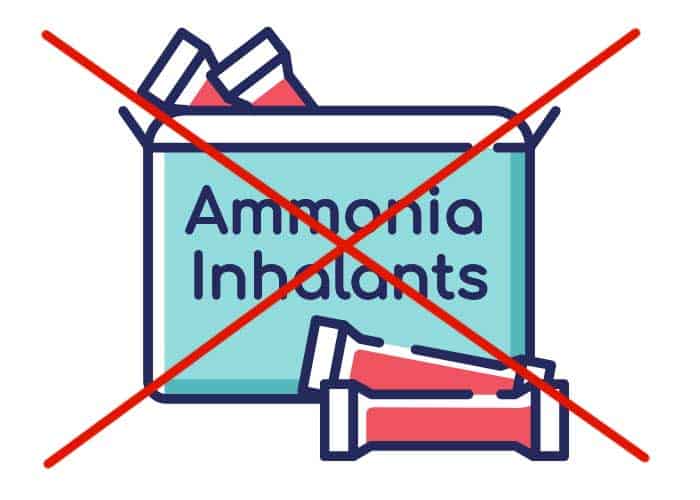
You can also take a sample of your water to your local fish store, and they will test the ammonia levels for you. Some fish stores do this for free, and others may charge you.
Because ammonia can be so dangerous to fish, I recommend always having some test strips on hand. They are not overly expensive and allow you to check several water parameters quickly before they get out of hand.
How Long Does It Take To Lower Ammonia Levels In Fish Tank
Many of the methods I have discussed will immediately lower ammonia levels in a fish tank. If your fish are struggling, you can do a large water change to reduce the ammonia level quickly. A large water change will remove much of the ammonia and dilute it with fresh water. You can add some nitrifying bacteria at the same time to kick-start the nitrogen cycle.
Adding a detoxifying water conditioner or ammonia remover immediately impacts the ammonia toxicity and brings some relief to your fish. Although this doesn’t lower ammonia levels, it renders it harmless to your fish.
Performing an emergency tank cycle to boost bacteria levels can take as little as 24 hours, whereas a traditional cycle from scratch can take between 3 and 6 weeks. Fish tank cycling is essential as it balances the levels of nitrifying bacteria and will avoid ammonia spikes in the future.
Wrap Up
There is no getting away from it. Excess ammonia in your fish tank can kill your beautiful, cherished fish. Ammonia is produced mainly from decomposing fish waste, food waste, and plant matter. Hopefully, you now know how to reduce ammonia in a fish tank!
There should be enough nitrifying bacteria in an adequately cycled fish tank to break down the ammonia before it reaches toxic levels. However, if your tank is not yet cycled or has a sudden ammonia spike, you must act fast!
The methods I have outlined in this article will help you lower ammonia levels quickly and effectively so your fish can start to recover. Test your ammonia levels regularly to catch any spikes early on, even when your tank is cycled.



